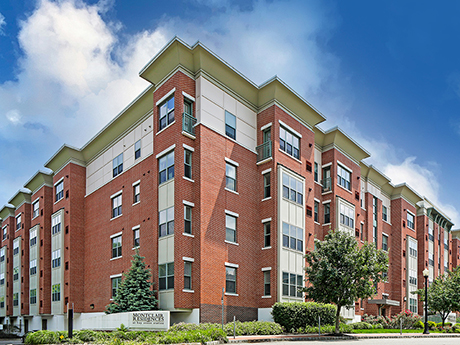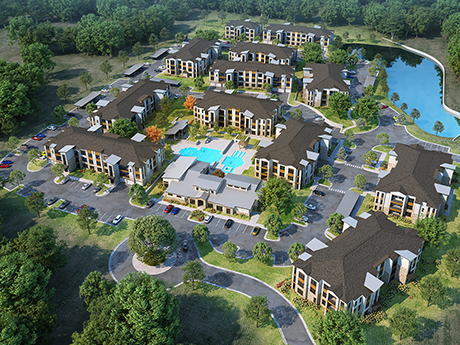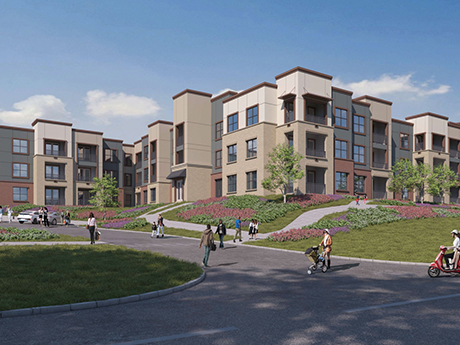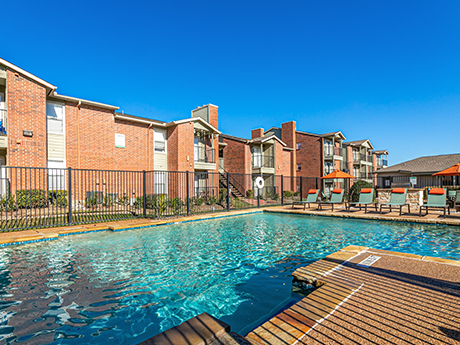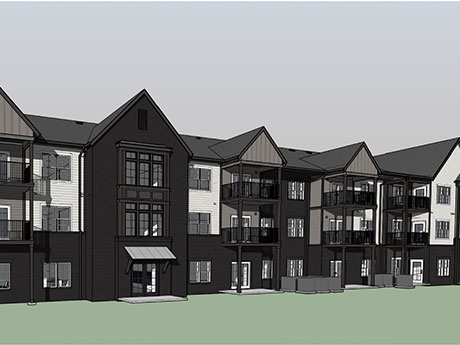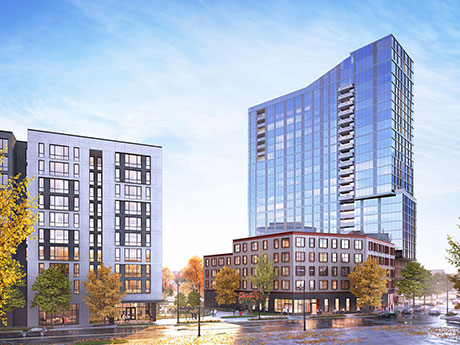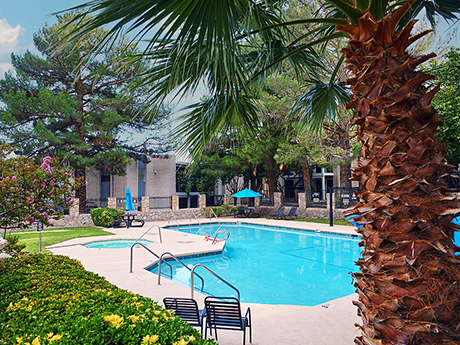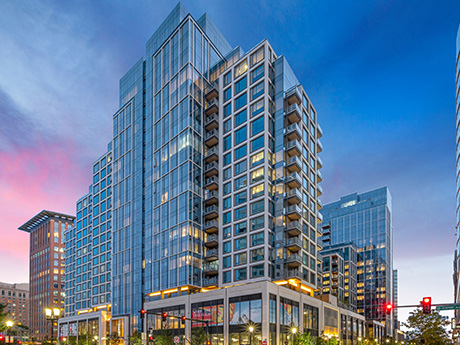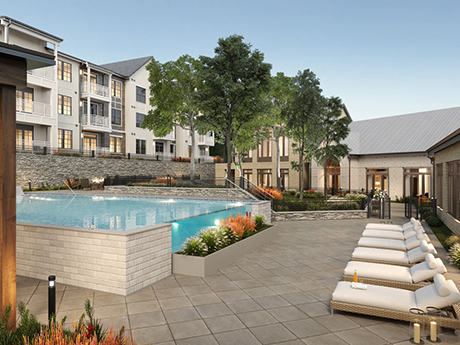By Mike Oliver, managing director, JLL Capital Markets Fundamentals remain strong within the multifamily markets of Northern New Jersey and the greater metro New York City area, though the dynamics have continued to shift since the onset of the pandemic. During COVID-19, there was movement away from urban areas toward the suburbs, creating a “tale of two cities” market dynamic. The suburban multifamily market became red-hot while urban markets cooled. Vacancies dipped below 80 percent in some instances, with heavy concessions being offered and flat to negative gross rent growth. Today, while the suburban markets remain very strong, urban markets are also now red-hot. This is attributable to more and more people heading back to urban centers in anticipation of returning to the office or simply wanting to be back in the excitement of downtown living and its dining, shopping and entertainment options. Additionally, many renters are being priced out of and fleeing Manhattan, Brooklyn and other New York City neighborhoods. Jersey City and the Hudson Waterfront provide attractive rental options with incredible access into Manhattan. Jersey City, for example, is demonstrating healthy fundamentals, as occupancy rates are back over 95 percent with strong growth on lease trade-outs. There …
Multifamily
By John D. Hutchinson, vice chairman, global head of origination, Trez Capital The COVID-19 pandemic brought mass migration to the Sun Belt states, and by far, the most sought-after location of the pandemic migration boom was Texas. Multifamily investment demand remains strong due a higher quality of living, affordability and job growth. People are leaving high-tax, high-regulation states and moving to states like Texas with lower taxes and more favorable business climates. Austin, specifically, has outshone the top cities in the “Texas Triangle” with its large influx of both people and jobs. Austin’s exponential population growth, attractive cultural qualities and high-income jobs have created demand for and premium prices on real estate. Although the U.S. economy has seen changes in the last couple of months, such as inflation and interest rate hikes, the city still affords a great opportunity for multifamily investors. According to data from CoStar Group, Austin has doubled its construction starts over the past year and is expected to add 15,827 new units in 2022. In fact, there was a record 25 percent rent growth and strong occupancy at the end of 2021. A Growing Market In 2021, the Austin area’s net population growth was about 16 …
After seeing its population grow by 97,000 between July 2020 and 2021, the Dallas-Fort Worth (DFW) metroplex is now home to nearly 8 million people, according to data from the U.S. Census Bureau. And it’s getting increasingly harder to adequately and affordably house the growing population. The problem isn’t new, just exacerbated, and it’s hardly unique to DFW. But when a market experiences the rate of population growth that the metroplex has over the last decade, the question of how much housing inventory exists that’s financially feasible for the average resident to rent or own gets thrust under the microscope. Of course, there’s a major difference between housing that’s affordable and affordable housing. The former is something of an arbitrary concept, whereas the latter carries a precise legal and regulatory definition. But the socioeconomic issue embodied within the two is largely the same. General Barriers A recent report from the National Low Income Housing Coalition ranked Texas — once heralded as the land of infinite land — as the sixth-worst state in terms of availability of rental housing for low-income households. This finding runs counter to Texas’ longstanding reputation as a state with an affordable cost of living, but …
By Al Silva, senior managing director, investments, Marcus & Millichap; and Ford Braly, first vice president, investments, Marcus & Millichap The multifamily segment in Fort Worth is in a great position. The metro’s vacancy rate slid down to a multi-decade low of 3.1 percent last year, which facilitated stellar rent growth as the number of available rental units plummeted. Fort Worth’s average effective rent grew more than 15 percent in 2021 to $1,276 per month, and the elevation in 2022 is expected to remain in the double digits. Behind this momentum is robust household formation as citizens relocate to the metro for greater job availability, cost-of-living considerations and quality of life. An average of 16,300 new households were created annually in the Fort Worth metro area over the past decade, and the 2022 addition is expected to eclipse that benchmark by about 20 percent. This rate of household creation is about twice as fast as the national pace and is happening at a time in which the barriers to homeownership have rapidly intensified, pushing much of the new demand toward the rental segment. Barriers to Homeownership The median price of a single-family house in the Fort Worth area climbed to …
By Ryan Kelly, TWG Development Despite the affordable housing crisis, Des Moines has managed to endure the adverse factors that have caused a boom in housing prices nationwide — but we still have a ways to go. A sustained demand, an influx of business and new projects by national developers all played a role in Des Moines’ multifamily growth over the past two years. Developing Des Moines Home to some of the largest multinational finance and insurance corporations, Des Moines has pioneered Iowa’s growth. The city has also seen population growth — the most recent census revealed that Des Moines’ suburbs led to Iowa’s development while the city itself grew by 5.4 percent. Des Moines is the 10th-best place for business and careers, according to Forbes, and ranked as the fifth-best city to live in, according to U.S. News and World Report. The capital city has experienced a boom in employment, with a rise in the number of high-tech jobs, at a 6.7 percent rate. The Midwest’s low cost of living (7 percent lower than the national average) and Des Moines’ proximity to large cities have contributed to the growth of key industries, including logistics, ag-bioscience, manufacturing, data and insurance. …
By Mike Drew, Structured Development As a longtime developer of multifamily, commercial and mixed-use properties in Chicago, I can tell you we’ve never seen anything like the last few years. From the highs of the pre-pandemic multifamily construction boom to the lows of the first year of COVID-19 lockdowns — when downtown emptied out — to today, it’s been a rollercoaster ride. But the multifamily sector has ultimately proved resilient and is roaring back stronger than ever. Here’s a look back at the past three years and a glimpse of three projects we broke ground on during the pandemic: Schiller Place, Big Deahl and Harrison Row. Early pandemic exodus For the years 2019-2021, developers were expected to build 9,000 apartment units in downtown Chicago, according to Integra Realty Resources. This figure was lower than the expected 10,700 units because of rising construction costs and uncertainty around property taxes, but still strong. Average rents for downtown Class A rental communities were $3.31 per square foot, per Integra, and occupancy was a robust 94.9 percent. When the pandemic hit nine months later, it greatly slowed that activity. Gov. J.B. Pritzker issued the first stay-at-home order on March 20, 2020, followed by other …
By Brad Frisby, director of land acquisitions, Rhodes Enterprises Demand for housing of all types continues to outpace supply in the Rio Grande Valley (RGV), and developers’ best efforts to add much-needed product throughout the region appear to be reaching a crescendo. Like the rest of the country, residential development in the RGV has been stymied and exacerbated by global supply chain disruption over the last year. Nor have developers in the region been spared from the pricing volatility of key construction materials, from basic building blocks like lumber and steel to more precise pieces such as air conditioning units and kitchen appliances. These factors, along with rising labor costs generated by the reheating of the regional economy, have negatively impacted conventional multifamily construction timelines and budgets over the past 12 to 18 months. While traditional single-family projects have not been hit nearly as hard as their multifamily counterparts, the net result of all this activity has been a widening of the gap between housing supply and demand. Though the regional vacancy rate for multifamily product is up on a year-over-year basis — about 4.5 percent today versus 3.5 percent at the end of the first quarter of 2021 — …
By Jack Stone, senior director of investments, Greysteel It seems like every month there’s a new sales record being broken in the El Paso multifamily market. But with interest rates officially rising, how long will that streak last? El Paso has been on a tear. Greysteel has sold roughly 4,000 units there in the past 36 months. That’s an impressive number, but it’s not a surprising one. Between 2012 and 2014, roughly 20 properties over 25 units traded in El Paso. That number skyrocketed to 69 properties between 2019 and 2021. But why? We’ve followed the El Paso market closely and have brought numerous first-time, out-of-state buyers to the market. The No. 1 reason they’re interested in El Paso is the competitiveness of other markets like Dallas and Austin, where cap rates have just compressed too much. With lower cap rates and cash-on-cash returns, investors started flocking to secondary markets where they can achieve higher yields. But El Paso, while a secondary market, has several factors that help it stand out from the rest: (1) it’s one of the top 20 largest cities in the country, which comes as a surprise to many; (2) it’s well-diversified, having weathered the recession …
By Becky Bedwell, vice president of development, Cottonwood Group As one of Boston’s fastest-growing and most dynamic areas, the Seaport District has gotten a lot of attention as it has undergone a multitude of transformations over the past 150 years. The area has evolved from a bustling railyard and shipping area in the early 20th century to a no-man’s land of parking lots in the 1990s to its most recent iteration: The Innovation District. While the spotlight is only growing brighter as several high-profile residential and mixed-use projects come on line in this distinctive and in-demand neighborhood, the headlines tell only part of the story. The Seaport District’s seemingly sudden emergence is the result of more than a decade of development and over $22 billion in public funding — efforts that have helped draw hundreds of new businesses and support a growing list of noteworthy developments. The challenges faced and opportunities realized by developers in this part of town reveal some important truths about what it takes to create great civic spaces and successful multifamily developments — not just in this city and this area, but in urban communities around the country. What follows are some best practices, consideration and …
By Taylor Williams From sprawling garden-style complexes in the suburbs to wrap-style construction and high-rise buildings in the urban core, multifamily properties come in many shapes and sizes. And in Texas, all of these product types are in high demand. Consequently, developers have generally seen healthy paces of rent growth over the last decade. But with each year of cyclical maturation, land becomes more scarce, construction grows more costly and more communities come on line, making the competition to secure renters increasingly stiff. On a more granular level, bidding wars for large tracts of land that can support major residential density are becoming increasingly intense with the growth of build-to-rent (BTR) development throughout Texas. Global supply chain disruption is putting relentless pressure on costs of construction materials and timelines for new projects, and leasing initiatives are getting smarter via sophisticated proptech platforms that were developed exclusively with real estate operations in mind. But these economic and operational constraints exist entirely on the supply side of the market. Simultaneously, demand for housing is accelerating unencumbered throughout Texas, a perennial medalist in population growth among the 50 states. These market factors are creating an unusual dynamic in which the forces that drive …


